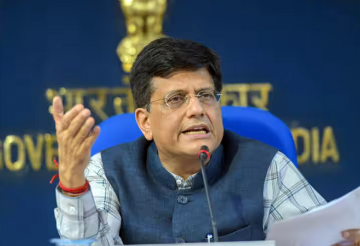
While tweaking city development plans for the woman workforce is still an alien concept, it has made its first impression in India — in Mumbai. This move is a boost to ‘
Feminist Urbanism,’ a theory and social movement concerning the impact of the built environment on women. The theory looks at how gender roles influence and have direct implications on urbanisation. It also takes into consideration people’s experiences and needs while introducing urban processes and projects. About
90 land parcels have been reserved across the 23-city wards in Mumbai to cater to the physical, social, and economic needs of working women in the city, leaning towards the urban poor.
One of the most cited examples in ‘Feminist Urbanism’ is the
Catalan Neighbourhood Law, which was passed in 2004, where the gender perspective was included in urban design, planning, budgets and every other city service. They started with gathering gender-sensitive data and facilitating group discussions to set out priority issues. The neighbourhoods went through safety audits and women helped in mapping their needs related to working and living in the area. The Catalan law could be used as a guiding principle for Mumbai.
.. some of these could be thought of differently — as gender innovation centres.
A gender advisory committee that is leading the implementation of the plan in Mumbai is looking into how these spaces could best cater to the women workforce — from those working in small scale units in slums and industrial areas to those working in official set-ups. The allocated areas will be used for public rental housing, providing child-care centres, creating common work spaces, and civic amenity centres. This could be a beginning to kickstarting new thinking on the future of work for women in megacities like Mumbai. With the fourth industrial revolution kicking in and a thrust being given towards innovation and entrepreneurship, while much of these spaces could be kept aside for all the purposes they have been allotted for, some of these could be thought of differently — as gender innovation centres.
The current
female workforce participation rate as part of the formal labour force is an abysmal 21 percent, almost 17 percentage points down from 2001 when it was 37 percent. A study by the McKinsey Global Institute also points out how by 2030, up to
12 million women in India could risk losing their current work due to automation. Keeping these expected transitions in mind, these centres could be an extension of the concept of the city livelihood centre discussed in the
National Urban Livelihoods Mission (NULM), where local demand and entrepreneurship at the ward level could be studied, and accordingly, centres could be equipped for business development.
While the concept of gender-inclusive budgets has made inroads in several city budgets in India, it will need to be backed by such concrete interventions.
These innovation centers could serve as incubators where business ideas take shape through support in ideation, financial planning, marketing, and finally connecting them to the government, education institutes and industry through a sandbox approach. This could help in creating the software and skilling needed for setting up new-age businesses that need a digital presence. Additionally, there could be a provision for co-working spaces where for a nominal amount new entreprenuers could get access to hardware facilities like WiFi, computers and meeting rooms. Libraries, lecture rooms, and exhibition areas could also be added. Projects that get floated through innovation centers could get funds through the NULM where Rs 2 lakh is loaned out for the setting up of individual micro enterprises and Rs 10 lakh for a group of urban poor.
The other avenue available is aligning the gender innovation centres with the
Women Entrepreneurship Platform (WEP), which is an enabling GOI platform for providing an ecosystem for budding and existing women entrepreneurs across the country. SIDBI has partnered with NITI Aayog to assist in this initiative. The WEP could assist the gender centers with providing knowledge, ecosystem support and handholding entreprenuers to set-up businesses and then scale them up. The products created could be standardised and marketed through either private platforms or the Government e-Marketplace (GeM) platform of the Government of India.
This is just the beginning to a larger change that cities in India desperately need when it comes to efforts related to gender inclusiveness.
While the concept of gender-inclusive budgets has made inroads in several city budgets in India, it will need to be backed by such concrete interventions. The budget provisions have to be supported by changes in the way women live, work, travel, and take care of their family, and this might be the ignition point. It was a six-year fight that 50 women in Mumbai took up with the government in 2013 — to have gender included in the city planning process and infrastructure — that has seen
fruition in 2019, and is now set to roll. But this is just the beginning to a larger change that cities in India desperately need when it comes to efforts related to gender inclusiveness.
The
2020 PISCA (The Prosperity & Inclusion City Seal and Awards) index highlighted that Mumbai stood 107th on its inclusivity index. Cities will need to give special attention to the needs of women and ensure that it builds on their economic productivity and recognises their contribution to the economy. This will include women who work in white-collared jobs along with those who work in a more informal environment including women migrant workers.
The
2030 Agenda for Sustainable Development has recognised the close link between SDG 11, which calls for ‘Creation of Sustainable Communities,’ and SDG 5 which is ‘Gender Equality.’ It is time that megacities like Mumbai in other parts of India also understand that urbanisation without inclusiveness will not lead to true growth.
The views expressed above belong to the author(s). ORF research and analyses now available on Telegram! Click here to access our curated content — blogs, longforms and interviews.



 While tweaking city development plans for the woman workforce is still an alien concept, it has made its first impression in India — in Mumbai. This move is a boost to ‘
While tweaking city development plans for the woman workforce is still an alien concept, it has made its first impression in India — in Mumbai. This move is a boost to ‘ PREV
PREV


